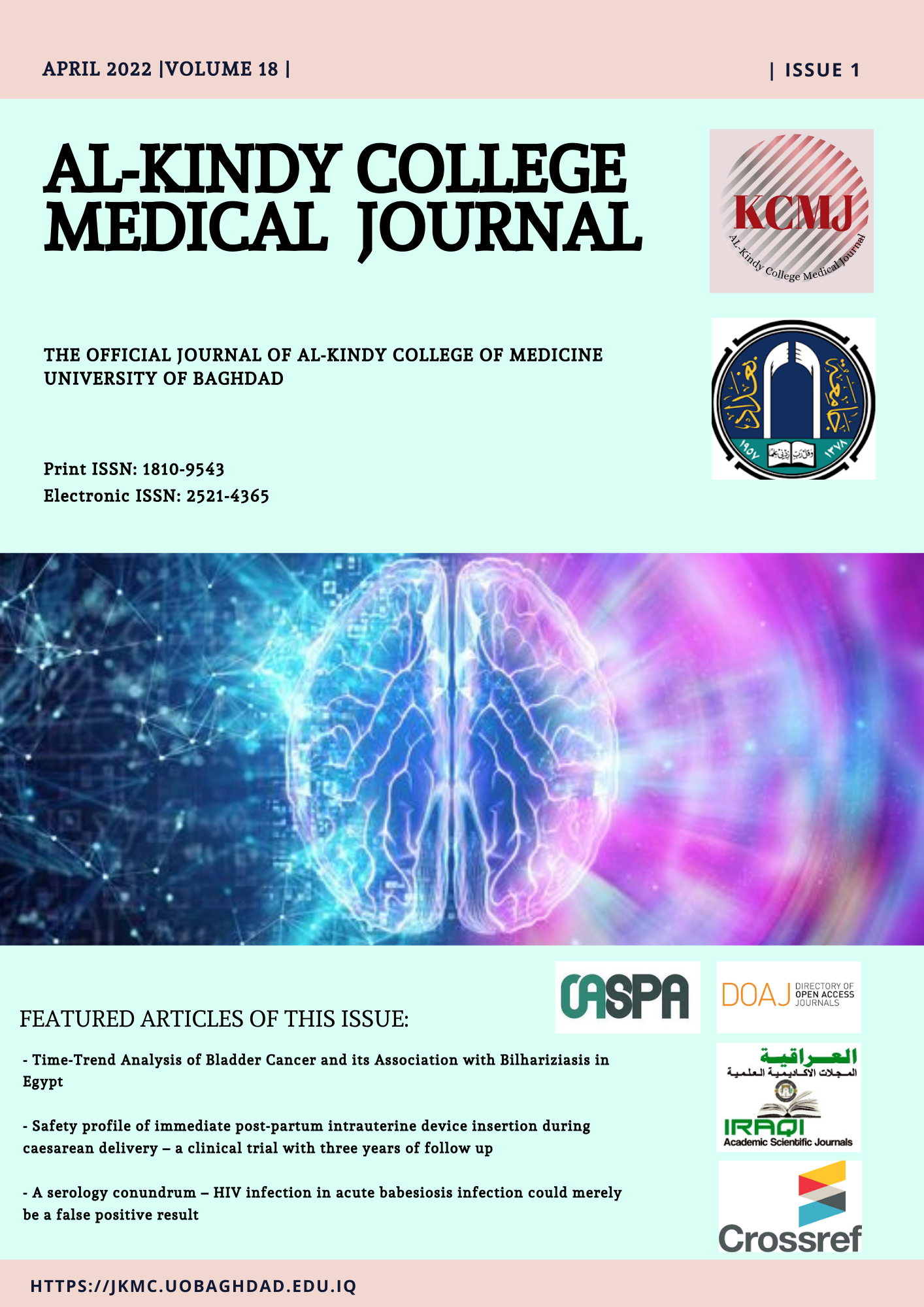The Role of Strain Elastography in Evaluating Borderline Axillary Lymph nodes
DOI:
https://doi.org/10.47723/kcmj.v18i1.692Keywords:
elastography, strain ratio, elasticity score, Borderline lymph node, axillary lymph nodeAbstract
Background: Axillary lymph node (ALN) enlargement with diffuse cortical thickening and conserved echogenic hilum may represent a diagnostic and therapeutic challenge. Sonographic strain elastography may help the characterization of borderline ALN.
Aim: To evaluate the strain elastography of borderline ALN and to calculate a cutoff value of strain ratio (SR) that can identify suspicious ALN with the highest sensitivity and specificity to reduce unnecessary invasive procedures.
Subjects and Methods: A prospective study included 45 patients who attended the Breast clinic in Oncology Teaching Hospital with borderline axillary lymphadenopathy (intact hilum and diffusely thickened cortex more than 3mm) who had normal ipsilateral breast, suspicious ipsilateral breast lesion, or who had ipsilateral mastectomy. B-mode sonography and elastography were performed for all participants. Four-point elasticity score (ES), and SR were obtained for the targeted lymph node followed by ultrasound-guided fine need aspirate (FNA) biopsy..
Results: Malignant ALN constituted 20% of the cohort. B mode measurements were not able to differentiate between cytologically confirmed benign and malignant ALN in terms of axis ratio (mean ± standard deviation, 0.46 ± 0.08 vs 0.50 ± 0.12) and cortical thickness (4.88 ± 1.93 vs 6.27 ± 2.46). The mean SR of all samples was 2.66 ± 2.25. Metastatic ALN depicted significantly higher SR (P<0.0001), with 88.9% exhibiting ES score 3 and 4. None of the metastatic ALN had ES score 1. ROC curve was used to investigate the utility of SR as a diagnostic tool. The area under the curve (AUC) was 0.906 with a 95% CI of 0.814-0.997, P<0.001. SR cutoff of 2.1 was chosen with 100% sensitivity and 66.7% specificity.
Conclusion: High proportion of borderline ALNs are not malignant. Strain elasticity can improve the risk stratification of such cases and prevent unnecessary invasive procedures. We suggested an algorithm that could better tackle borderline ALN which will need further evaluation
Downloads
Published
Versions
- 2022-05-05 (2)
- 2022-05-05 (1)
Issue
Section
License
Copyright (c) 2022 AL-Kindy College Medical Journal

This work is licensed under a Creative Commons Attribution 4.0 International License.














